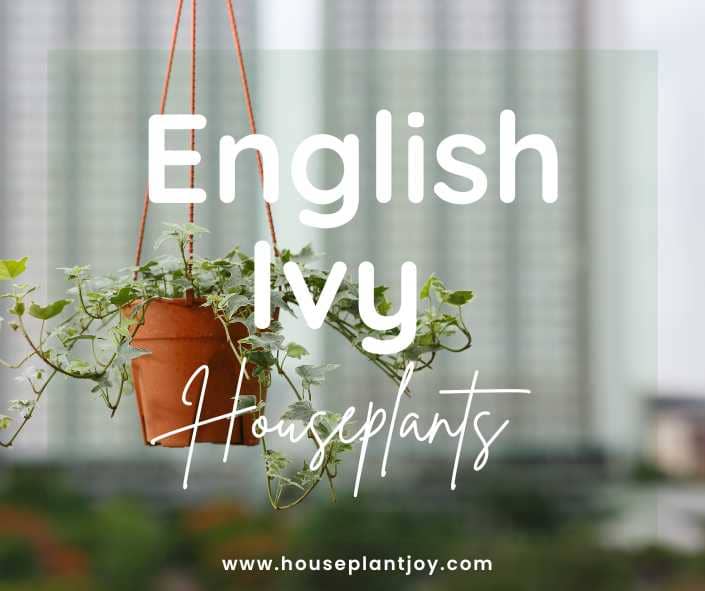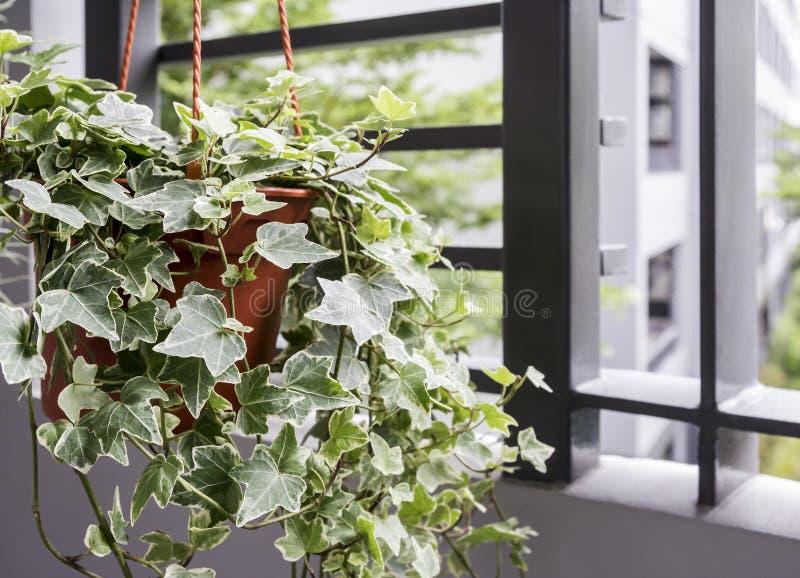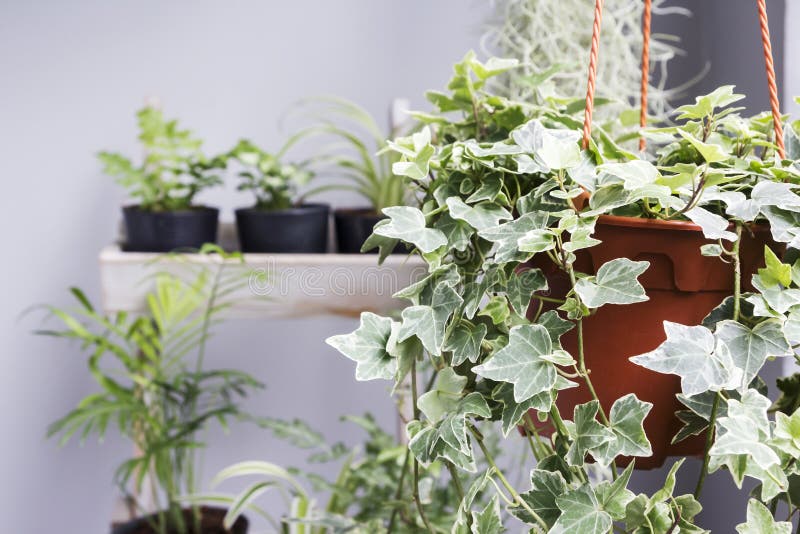HousePlantJoy is supported by our audience. When you purchase through one of our links, we may earn a small affiliate commission. As an Amazon Associate I earn from qualifying purchases. Your cost is not affected.
==================
Plant-growers commonly have mixed feelings about growing English Ivy houseplants, for that matter. Some people like them, some people don’t. But I think English ivies are some of the most beautiful and decorative plants you have can indoors.
Today, I will talk about English ivy as a houseplant. You will learn about this plant, how you can benefit from growing it in your home, how to grow English ivy indoors, and any particular things you should consider before getting this plant. If you’re someone who’s debating whether or not English ivy houseplants are for you, then keep reading.
What Kinds of Plants are English Ivies?
Based on the name itself, English ivy is among the several other ivy plants that exist today. It has the scientific name Hedera helix and is an evergreen perennial that grows both vertically and horizontally. English ivy can grow to about 6.8 inches in height or 15 feet in width.
The leaves of English ivy are famous for being heart-shaped and can be in various colors, such as varying shades of green, yellow, gray, cream, and even purple. I bet you’ve seen buildings or walls covered in leaves? Yeah, those are probably English ivy.
These plants are known to be quick-spreaders and invasive, so they are usually used for landscaping. However, there’s no harm in keeping them indoors, although not many are confident about the idea. If you grow them right, you will find that English ivy plants are great home companions.
A benefit of keeping English ivy houseplants is that they will even purify your air for you! If you wish to inhale cleaner air, you can count on English ivy houseplants to filter toxic pollutants inside your home.
Some of the Air Pollutants you can avoid inhaling by keeping English Ivy Houseplants are:
- Formaldehyde – This air pollutant is the oldest and most common indoor air pollutant known to man. It can cause eye and nose irritation, upper respiratory problems, and some research would tell you that it has carcinogenic (or cancerous) properties.
- Xylene – Poor ventilation in your house or building can result in xylene in the air. If inhaled in high amounts, they can cause nausea, headaches, impaired muscle coordination, irritation, or death.
- Benzene – This air pollutant is known for being carcinogenic or cancer-causing. It affects children or pregnant women primarily.
- Toluene – This is the air pollutant most typically found in typical households. Toluene causes irritation or visual and neurological disorders if you’re exposed to it for a long time.
Our English Ivy Houseplants Originated
Many of my own houseplants arrived via UPS or USPS, shipped from growers. English Ivy plants ship quite well and usually arrive in excellent condition. This one from American Plant Exchange, is a favorite of mine.
How to Grow English Ivy Houseplants
Are English ivies high maintenance? They are most definitely not. You will be surprised at how easy you can grow and take care of English ivy houseplants.
Here are all the tips you need to know about how to grow English Ivy houseplants.
Your Houseplants Like Medium, Indirect Sunlight.
Outdoors, you can grow English Ivy just fine with partial to full shade, which is why they’re great covers for sparse areas under the trees in your landscape. However, you may want to place this plant in your home under medium, indirect shade sunlight in all seasons except winter.
In winter, you can place them under direct sunlight if you don’t want them to receive inadequate amounts of sunlight. We need to be careful not to expose them to direct sunlight, especially in the summer, because their leaves may burn. That’s not something we want, is it?
Humidity is their Best Friend!
Humidity is their Best Friend!
English Ivy thrives in environments with highly moist air. In some parts of the world, humidity is high, but if you’re not residing in those areas of the globe, you can benefit from artificially creating humidity in the air. For that, you can turn on your humidifier, give their leaves a daily mist, or use a humidity tray.
Simply fill a tray with pebbles and water high enough to soak the gravel for the humidity tray. Place your English ivy, and as the water evaporates, your plant will obtain the humidity required. You can give it a try for your other plants, too!
You have to learn how much water is sufficient. Too much or too little will hurt your English Ivie Houseplants
If there is one thing to know about English Ivies, it’s that they’re not fond of wet soil. Thus, overwatering your English Ivy houseplant only calls for a plant disaster! Too much water will cause the leaves to turn brown and the edges to dry out due to the roots drowning and not delivering nutrients where they need.
On the other hand, too little water will make them prone to insects and pests and cause overall stress to the plant. Pests like to mess with your plants when they’re at their weakest and most stressed state. Watch out for spider mites, mealybugs, scales, or whiteflies.
Always check the soil before watering to ensure that you’re giving your English ivy the right amount of water. Dip about an inch of your finger into the ground, and if it’s dry, then it’s time to water them. Also, your English ivy will appreciate some bottom holes in their pots to help with moisture drainage.
They prefer environments with lower temperatures.
Of course, they do; they are native to Europe, Russia, and Scandinavia, after all. English Ivies are not like tropical plants that thrive in high-temperature climates. These plants prefer temperatures as low as 50 to 80 degrees Fahrenheit.
Some Issues with Growing These Houseplants
While low-maintenance and relatively easy to grow, English ivy houseplants are no-nonsense plants. You must take specific considerations if you genuinely want to commit to taking care of English indoors. Here are some of the problems that you may encounter when growing English ivies.
They are Invasive Plants
If you missed it before, English Ivies are invasive plants, as any other ivy plant is. They grow at aggressive rates, and this may be a good thing for some but not for all. The good thing about its invasiveness is that you can use them as ground cover to patch up sparse areas in your garden.
However, when a plant is invasive, it can spread almost uncontrollably and be detrimental to other organisms’ growth or lives. You may want to learn how to control the growth of English ivies to avoid waking up to your wall covered in English ivy leaves.
Some would argue that they can damage walls
English ivies spread, climb, or trail on walls through their aerial roots, which can attach the plants onto the surface of walls. Some people believe that English ivies cause walls to crumble and fall, but in reality, it’s far from that.
Studies have found that the aerial roots of English ivies cling to areas on walls that are already broken. This is because it gives them more corners and crevices to work with to support the trail of the plant. However, more research is needed to prove this claim ultimately.
Thus, you might want to be careful and wise when planning which part of your house you want to put your English ivies. Good thing they are versatile enough to climb on walls or the ground and be placed in hanging pots.
They Can Sometimes Cause Tree Injuries
These plants don’t directly damage trees, but their presence threatens the trees in their near vicinity. One of the reasons for this is the inevitable competition for water, sunlight, nutrients, and minerals essential for tree health. This competition weakens trees and makes them susceptible to branch dieback and diseases.
However, since we’re growing our trees indoors, our trees are safe from English Ivies. If you have other plants at home, though, remember to allow space between your other plants and English ivies.
Touching them may cause an allergic reaction or dermatitis.
English ivy can irritate your skin or cause dermatitis, just like poison ivy. Skin contact with English ivy can cause itching, blisters, and rashes. If you wish to handle your English ivy, you can do so with protective gardening gloves.
You have to consider this for when you have kids at home who may unknowingly contact any parts of the plant. If you plan to hang them overhead, they may be safe, but if not, you will either have to seriously orient your kids about its effects on the skin or do without it.
Caution: They are Toxic to Pets and People.
English Ivy is poisonous, which you should consider when considering getting them for your house. Its poison is only mild, but it will accumulate and become harmful when continuously consumed. Even if you know better than to eat them, it may not be the case for your pets if you have some.
Small amounts of English Ivy can cause minor gastrointestinal problems with no symptoms, but higher intake can worsen your health. You or your pet may experience muscle weakness, fever, hallucinations, motor coordination problems, breathing problems, or in the worst-case scenario, you may fall into a comatose.
English Ivy Houseplants: Conclusion
English Ivy can be aesthetically pleasing, especially in our home. However, like any other plant, English Ivies have a lot of advantages as well as disadvantages. Some of those disadvantages need a lot of caution and consideration. So, before getting one, make sure that you are acknowledging and considering the consequences of it. That being said, I hope this article gave you an insight into English Ivy Houseplants. Let us know your thoughts below.








